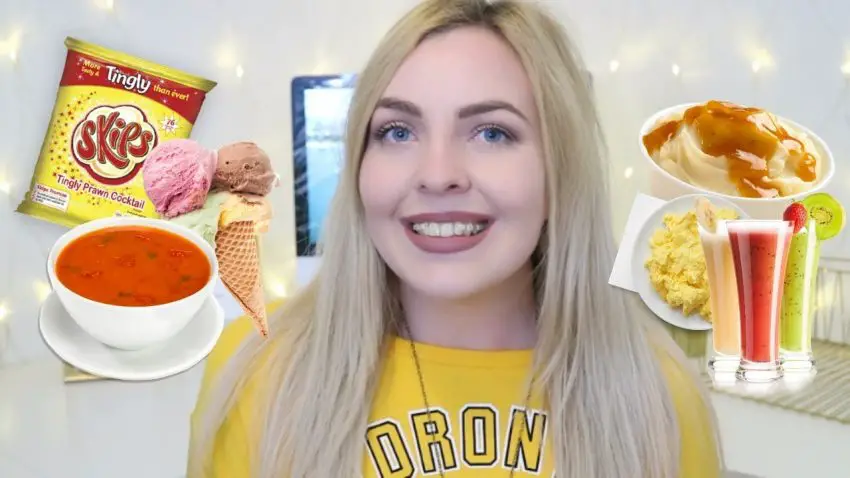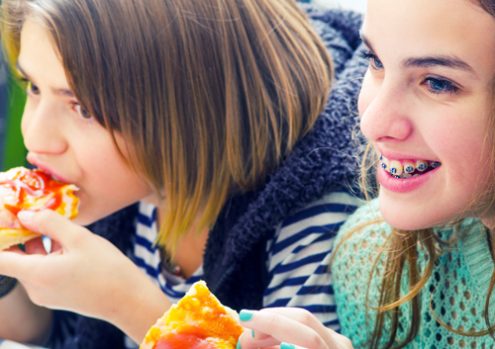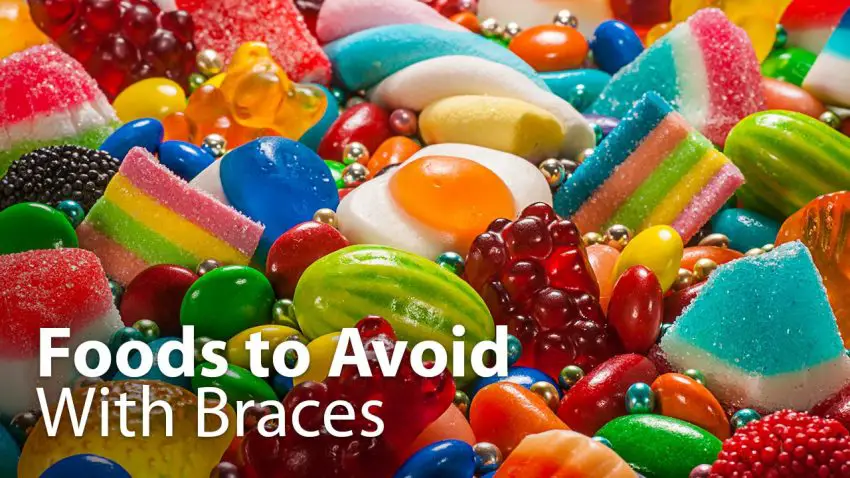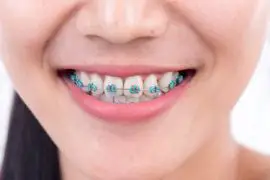TOP 15 SOFT FOODS TO EAT WITH BRACES HOME & SCHOOL
What to eat after braces tightened
Soft foods to eat with braces. While there are some fortunate individuals that are unbothered by the process of having their braces tightened, there are also a number of patients that feel discomfort after their tightening is complete. Because your child may experience tooth sensitivity, you’ll want to have an assortment of soft foods to eat after getting their braces tightened. This is a great habit to develop, with braces tightening occurring anywhere between every 4-8 weeks.
Here is a list of some soft foods to eat after getting braces tightened:
- Oatmeal
- Applesauce
- Soup
- Mashed potatoes
- Smoothies
- Yogurt
- Eggs
- Jell-O
In contrast to the soft foods that you should choose, keep in mind that there are also many foods to avoid with braces. Many of these common foods have qualities that make it difficult for your child to thoroughly clean their teeth. Eating these foods could cause sugars to settle in hard-to-reach areas, leading to tooth decay. Some foods can even damage braces.
These are just some of the foods that you can’t eat with braces:
- Nuts
- Hard Fruits and Vegetables
- Bagels
- Hard/Chewy Candy
- Gum
- Beef Jerky
- Pretzels
Although these are not comprehensive lists, they serve as starting points for you to refer to when you are in need of ideas as to what foods are gentle on the teeth.
Reducing the Discomfort of Having Braces Tightened

In addition to searching for soft foods to eat after getting your child’s braces tightened, you may also be searching for ways to get rid of pain. Below are suggestions of how to ease the pain that may come with having braces tightened.
- Pain Relievers such as ibuprofen and acetaminophen help reduce gum pain.
- A Soft-bristled Toothbrush gently cleans teeth.
- Oral Anesthetics work by numbing the area where the product is applied.
- Icepacks help with reducing inflammation.
15 Soft foods to eat with braces
soft things to eat with braces.
1. Pizza Soup
When you’re craving pizza, make this soup instead. Blend thoroughly if chewing simply isn’t an option.
2. Smoothie
These are a really wonderful option to get all of the nutrients that you need in once quick blend. You don’t need to chew and they fill you up when you drink them. The best part is that you can mix and match whatever flavors you want by mixing different fruits, juices, milks, greens, protein flavors, and more!
3. Yogurt
Creamy, smooth, and delicious yogurt is a favorite soft food. Buy commercial or make your own—it’s easy!.
4. Mashed Potatoes
Mash boiled potatoes and mix with butter, salt, pepper, and sour cream. Try adding boiled, mashed cauliflower, carrots, or parsnips for added flavor.
5. Applesauce
Dress up canned applesauce with a dash of cinnamon or simmer your own fragrant applesauce on the stove in about 15 minutes.
6. Popsicles
Refreshing ice-cold popsicles quickly numb sore gums. Puree fruit and pour into popsicle molds before placing in the freezer for three or four hours. Alternatively, use fruit juice; and soda makes fun, fizzy popsicles.
7. Scrambled Eggs
The protein in scrambled eggs will satisfy your appetite with each fluffy forkful. that calls for milk, Monterey Jack (or other hard cheese), and cream cheese.
8. Baby Food Peaches
A jar of pureed peaches is fantastic at any age. Or, choose any other flavor of baby food that you like.
9. Bone Broth
When you’re sick of sweet foods, a mug of meaty bone broth hits the spot. Find out what makes bone broth so good for you and how to make it here.
10. Roasted Winter Squash
Hearty winter squashes like acorn, butternut, and banana squash are phenomenal roasted and mashed. Mix with butter, salt, and pepper, and add a little brown sugar or a pinch of nutmeg for a finishing touch.
11. Meal Replacement Shakes
Pick up a few meal replacement shakes by brands such as Ensure, Slim Fast, or Carnation.
12. Canned Chili
Canned chili is soft, and you can dress it up with some cheese, sautéed green pepper and onions, and spices like cumin, chili powder, and garlic.
13. Savory Custard with Cheese
Find the recipe here.
14. Ice Cream
Like popsicles, ice cream numbs sore mouths with each creamy spoonful.
15. Mushy Peas
Feeling British? Use frozen peas to mix up a batch of this British-style favorite.
Having braces tightened is a necessary step in achieving straight, healthy teeth. In order to maintain overall oral health and to avoid discomfort, you should encourage your child to follow these suggestions.
Soft foods to eat with braces at school

From the Cafeteria
Encourage your student to stick with soft foods that don’t require biting into. Some good choices include:
- Soup, either creamy or with soft vegetables
- Salads without crunchy vegetables or croutons
- Soft, shredded chicken or beef
- Egg or tuna salad
- Tofu
- Pasta
- Meatloaf
- Macaroni and cheese
- Soft casseroles
- Steamed vegetables
- Mashed potatoes
- Soft breads or tortillas
Bringing a Lunch?
There are many great options for packing a lunch bag! Just remember to keep foods at the proper temperature, with insulated containers for hot foods and two cold sources, such as two frozen gel packs, for cold foods.
- Sandwiches with soft filling (no chunky peanut butter!) on soft bread. Thinly sliced, easy to chew cold cuts will work, but cold cuts like salami are too chewy. Cut the crusts off if necessary. Cutting sandwich wedges into smaller portions will also make them easier to eat.
- Hard boiled eggs
- Hummus and soft pita wedges
- String cheese and soft crackers
- Applesauce
- Yogurt
- Soft fruits such as berries or bananas
- Jell-O or other gelatin dessert cups
- Pudding cups
When to Say “No, Thank You”
If you have to bite into it, if it’s chewy, or if it’s crunchy, it’s best to choose something else! Here are some common culprits when it comes to broken brackets and wires:
- Caramel
- Hard candy
- Popcorn
- Whole carrots
- Whole apples
- Hard rolls
- Pizza
- Corn on the cob
And remember to send your child to school with a brush and floss to clean teeth and braces after lunch. Dental hygiene is very important now, because brackets and wires can both trap food particles and make brushing them away more difficult. This can lead to increased plaque, cavities, and staining around the area of the braces. If it’s impossible to brush, be sure to remind your student to rinse thoroughly with water after eating.
Lunch hour should be a time to relax, get together with friends, and recharge for the rest of the school day. Talk to us about the most (and least) braces-friendly foods and recipes. By learning what foods to avoid and adjusting some old favorites, your school-age child can continue to enjoy healthy, tasty lunches. Most important, visiting Dr. Sal Carcara at our Westwood, NJ office for an emergency repair will not be on anyone’s list of afterschool activities!
Foods to avoid after a braces adjustment

In order to speed up your healing and relieve the soreness, you’ll want to stay away from hard and crunchy foods. It’s important to give your jaw and your teeth a rest from anything that will bother your mouth even more. Some of these foods can also bend or break your brackets. If that happens, you’ll need to take another trip to the orthodontist and you may even need to wear your braces even longer.
- Crunchy foods – Chips, popcorn, pretzels, crunchy granola bars, raw veggies like carrots and broccoli, taco shells
- Sticky foods – Anything with caramel, sticky granola bars, chewing gum, sticky candy like Tootsie Rolls
- Hard foods – Hard breads, nuts, hard candy
- Corn and the cob – Or any other foods that you bite into like apples
- Gummy snacks – Fruit snacks, gummy candy
- Chewy foods – Chewy breads, pizza crust, bagels, tough meats, beef jerky, slim jims, Starburst candy
- Ice – No ice chewing (it causes your brackets to loosen). Don’t chew on your pen caps either!
Considerations for eating with braces
Regardless of what types of foods you eat with braces, it is important to keep the crevices between the teeth and around the braces very clean. That means brushing and flossing after meals to prevent the build-up of plaque and decay. Not only can failing to do so damage the teeth and gums, but it can also cause discolouration which can last a lifetime.
If you’re wanting to ensure the best results from your orthodontic treatment it is very important that you follow the advice about safe foods for braces that is set out above and ask your orthodontist if you have any questions about your specific treatment.
Care & Maintenance: “A Must During Treatment”
1. How to Brush with Braces
- Brush thoroughly after each time you eat a meal or snack. If you cannot brush right away after a meal, be sure to rinse your mouth with water.
- Use fluoride toothpaste and a soft, rounded-bristle toothbrush.
- Braces wear out a toothbrushe quickly, so be sure to replace it as soon as it shows signs of wear.
- Brush around all the parts of your braces and every surface of your teeth.
- You’re doing a good job if your braces look clean and shiny, and you are able to see the edges of the brackets clearly. Fuzzy-looking or dull metal indicates poor brushing.
2. How to Floss with Braces
- Floss every night before you go to bed
- Use a floss threader. This reusable tool allows you to get dental floss underneath the wires easily.
3. Eating with Braces
There are a few dietary adjustments that need to be made in order to protect your new braces, and ensure that your treatment goes smoothly. But don’t worry, there are still many tasty foods that you can still eat!
Foods you CAN eat with braces:
- Dairy – soft cheese, pudding, milk-based drinks, yogurts, cottage cheese, eggs
- Breads – soft tortillas, pancakes, muffins without nuts
- Grains – pasta, soft cooked rice
- Meats/poultry tender meats, meatballs, lunch meats
- Seafood
- Vegetables – mashed potatoes, steamed veggies, beans
- Fruits – applesauce, bananas, fruit juice, smoothies, berries
- Treats – ice cream without nuts, milkshakes, Jell-O, plain chocolates, peanut butter cups, brownies, soft cookies. But remember to always limit your intake on sugar!
Foods to avoid with braces:
- Chewy foods – bagels, licorice, pizza crust, French breads
- Crunchy foods – popcorn, chips, ice, hard candies including lollipops, thick pretzels
- Sticky foods – caramel candies, chewing gum, gummy candies
- Hard foods – nuts, hard candies
- Foods that require biting into – corn on the cob, apples, carrots, ribs and chicken wings
Habits to avoid with braces:
- Chewing on objects such as pens & ice cubes
- Nail-biting
- Smoking
Tips for Athletes & Musicians
You can still play sports during your treatment, but remember to protect your teeth with an orthodontic friendly mouth guard, just as you would normally. If you are involved in an accident during athletic activity, check your appliances and your mouth immediately. If the appliances appear damaged or the teeth loosened, schedule an appointment.
If you play an instrument, you may find it a little challenging to become adjusted to playing with your braces. It is normal to have some difficulty with proper lip position and sores can develop, too. Liberal use of wax and warm salt-water rinses will help your lips and cheeks toughen. Don’t shy away, practice makes perfect!

